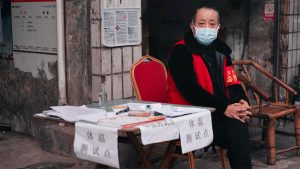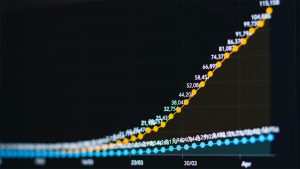So, good news, we’ve surmounted some technical difficulties and have been able to substantially expand our seats at the upcoming May 19 videoconference. It will be a once-around-the world examination of where we stand in and what to expect from the ongoing coronavirus pandemic. You can register at the link at the bottom of this newsletter:
Part and parcel of the coronavirus epidemic is a general breakdown of international connections of all types. This impacts finance and manufacturing and transport and industrial commodities and on and on and on.
One “sector” that is often overlooked is migrant labor. Migrants do more than mow lawns and clean houses, they harvest crops and process meats and work in factories and build roads and homes. Some “migrants” even wear suits and work on Wall Street. They are a fact of life in every advanced – and many developing – economies.
During coronavirus lockdowns, their lives – like everyone else’s – are on hold. What makes migrants different from native workers, however, is that a big proportion of their income doesn’t stay with them. It is sent abroad where it often comprises the most important financial stream for their families back home. No income, no remittances. No remittances, and anyone the migrants support slips into poverty. While there are loads of exceptions (a Luxembourger working in the London financial district could be a “migrant”), as a rule the areas migrants come from are among the poorest in the world.
Somewhat ironically, and more than a bit tragically, a collapse in remittances tends to generate more migrants. After all, the alternative is to shelter in place in destitution.

On May 19 I’ll be doing a once around the world, laying out where we stand in the current crisis. Which countries are suffering most critically? Which are pulling ahead? What the shape of the pandemic will be in the weeks and months to come? What will the world look like once coronavirus is in our collective rear-view mirror? As with all the videoconferences, attendees will have the opportunity to submit questions during the event.
While most of these events are for a set fee, the May 19 event will be free of charge. We’ve managed to expand our technical capacity and so still have lots of seats. And should those fill up as well, fear not! We’ll be recording the entire videoconference and posting it upon completion. First release will be via this newsletter list which you can join on the newsletter page.
Newsletters from Zeihan on Geopolitics have always been and always will be free of charge. However, if you enjoy them or find them useful, please consider showing your appreciation via a donation to Feeding America. One of the biggest problems the United States faces at present is food dislocation: pre-COVID, nearly 40% of all foods were not consumed at home. Instead they were destined for places like restaurants and college dorms. Shifting the supply chain to grocery stores takes time and money, but people need food now. Some 23 million students used to be on school lunches, for example. That servicing has evaporated. Feeding America helps bridge the gap between America’s food supply (which remains robust) and its demand (which coronavirus has shifted faster than the supply chains can keep up).
A little goes a very long way. For a single dollar, FA can feed one person for three days.








